I'm trying to adapt some equations (implicit f(x,y)) in order to be able list the Y for corresponding X-Value.
The equations could be e.g. as follows:
y^2 = x^3 + 2x - 3xy
(X^2+y^2-1)^3-x^2y^3=0
X^3+y^3=3xy^2-x-1
X^3+y^2=6xy/sqrt(y/x)
cos(PI*Y) = cos(PI.X)
Below you can see the plotted equations:

Hint, I don't know, but maybe this can be helpful, the following applies:
Y^2 + X^2 =1 ==> Y= sqrt(1-X^2)
The equations are to be adapt (substitution), so that they are expressed by X (not Y).
For y^2=x^3+2x-3xy by means of substitution results:
y1 = (-(-3x) - sqr((-3x)^2 - 4(-1)(x^3+2x)))/2*(-1)
y2 = (-(-3x) + sqr((-3x)^2 - 4(-1)(x^3+2x)))/2*(-1)
By means of adapted equations I will be able to vary X and get the corresponding Y.
See here the solution of Arkadiusz Raszeja-Solution for the equation y^2=x^3+2x-3xy
The solution of "Arkadiusz Raszeja" is for Quadratic equation, but I need an algorithm, so that e.g. all above equations can be solved.
var x,y;
for(var n=0; n<=10; n++) {
x=n;
y = (-(-3*x)-Math.sqrt(((-3*x)*(-3*x)) - 4*(-1)*((x*x*x)+2*x)))/(2*(-1));
alert(y);
}
The above alert(y); will show for Y something like below list:
X= 1 ; Y=0.79
X=2 ; Y=1.58
X=3 ; Y=2.79
X=4 ; Y=4.39
X=5 ; Y=6.33
X=6 ; Y=8.57
X=7 ; Y=11.12
X=8 ; Y=13.92
X=9 ; Y=16.98
X=10 ; Y= 20.29
My question is how can I program an algorithm, which will adapt (solve) the equations like in above example?
(You can also use a JS library like math.js, but not a plot or graph library. The solution should be in javascript)
Thanks in advance.